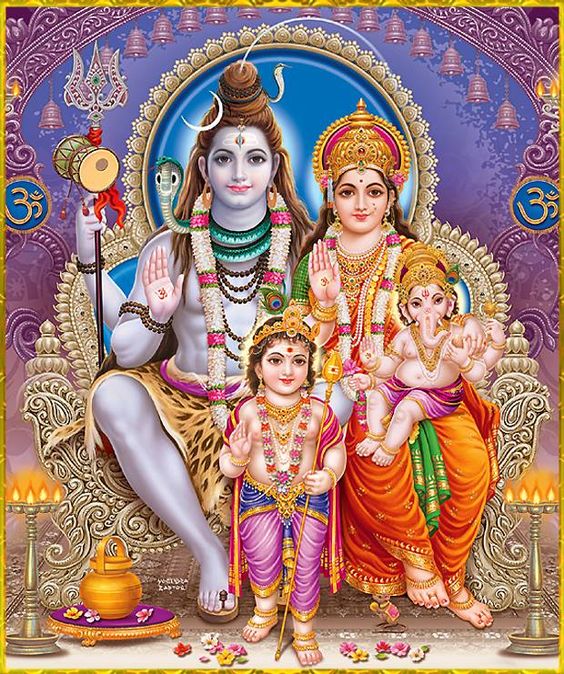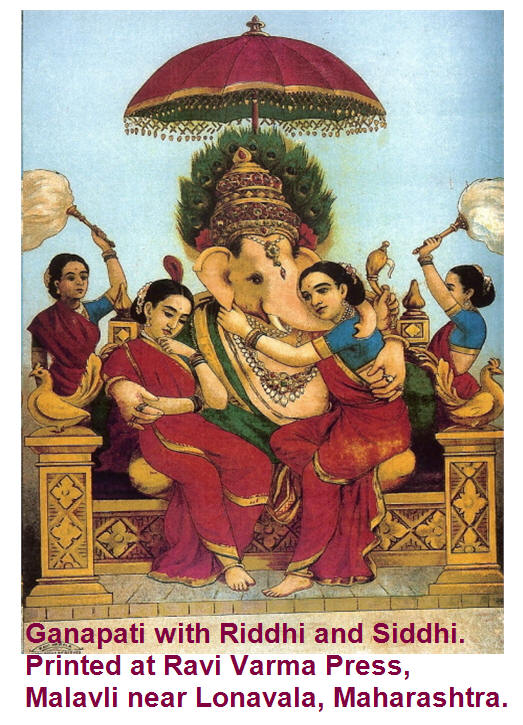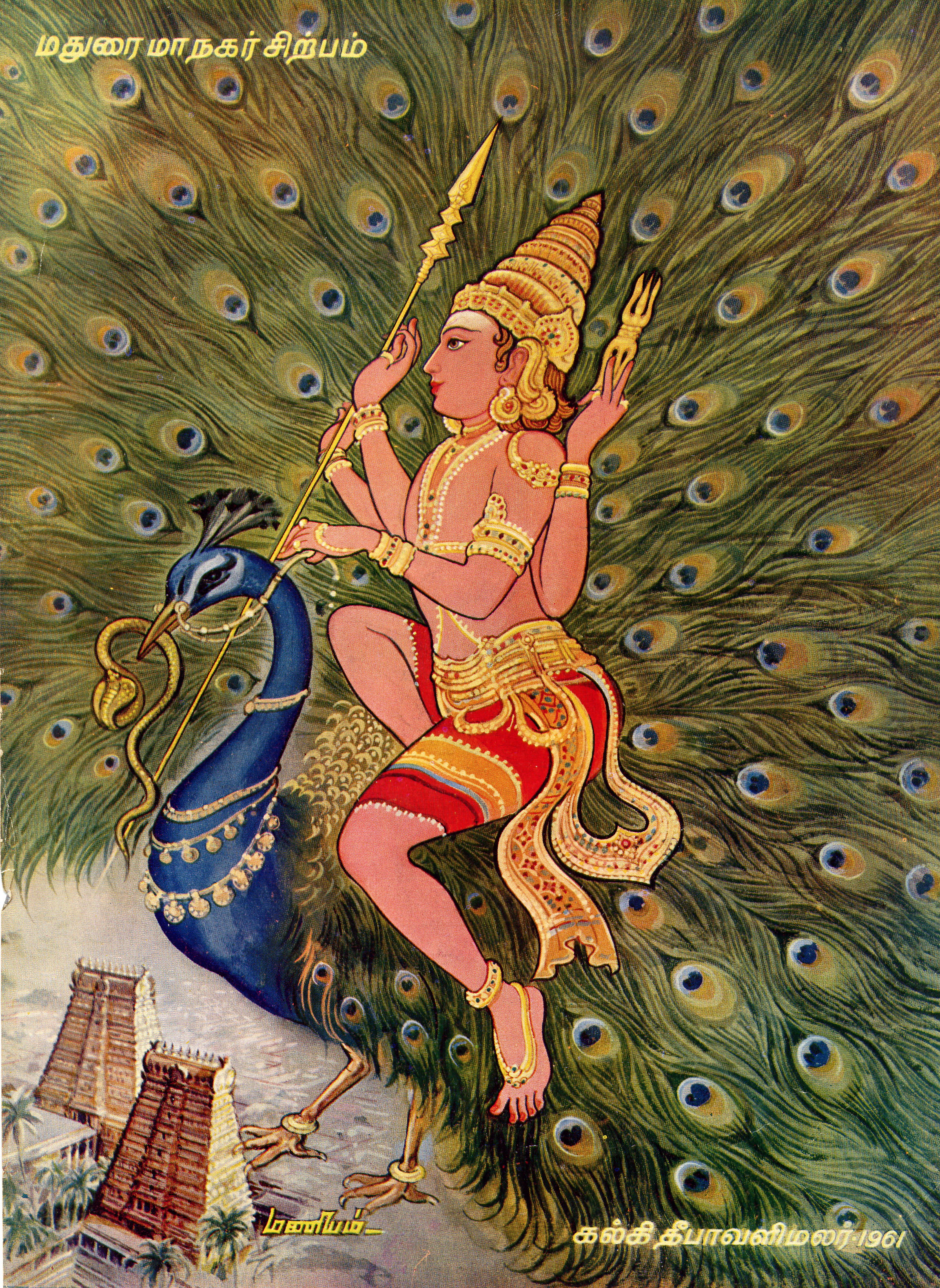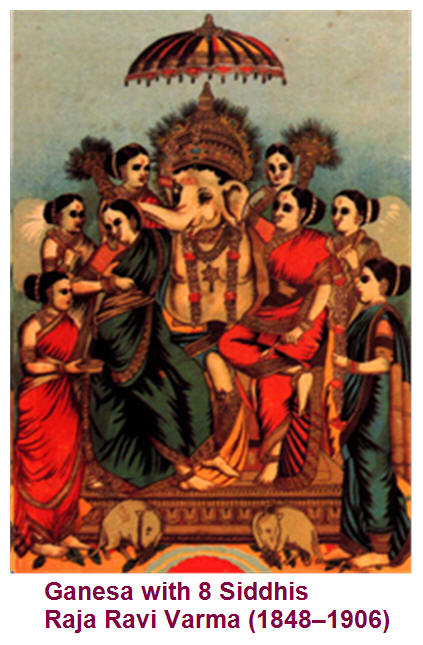Veeraswamy Krishnaraj
Parvati
and Siva were thinking of becoming in-laws. Who will marry first: Ganesa
or Kartikeya? This dilemma plagued the divine couple. They loved both
equally. They put them to a test. Whoever accomplishes the challenge
first will be the first to marry. Siva asked his sons to do a
Pradakshiṇa (circumambulation) around the world. Whoever returns first
will be the first to tie the knot.
Siva announced the ‘Go’ order, Kartikeya mounted
his Vahana (a peacock) and flew around the world. Ganesa in the mean time thinking a
world of his parents circumambulated them seven times when Kartikeya
made only one trip around the world.
With assent from his parents, Ganesa, the winner in
the race, married Buddhi (Intellect) Siddhi (Spiritual power) and Riddhi
(Prosperity). They are the personified Saktis of Ganesa.
In another portrayal, Ganesa was married to
Sarasvati. Yet more commonly, Ganesa is portrayed as a Brahmacharin
(unmarried). Ganesa Purana calls him Abhīru
which has a dual meaning: "Without a woman" and "Not Fearful."
Images show one as Ganesa, two as Ganesa and
Sarasvati, three as Ganesa, Siddhi and Buddhi, four as Ganesa, Buddhi,
Siddhi and Riddhi. In one instance, the mind-born daughters of Brahma,
Buddhi and Siddhi are given in marriage to Ganesa and seated on his left
and right side respectively. In the north
India,
Siddhi
and Riddhi are
the two consorts as depicted in Siva Purana. Matsya Purana depicts
Riddhi
and
Buddhi.
Siddhi
and
Buddhi are the daughters of Prajāpati.
Siddhi
and Buddhi had two sons, one each: Kṣemaḥ (Prosperity) and
Lābha
(Profit) respectively.
Credit: Kalki Dipavali Special 1961. Murugan on his peacock.
These two are feminine emanations of
androgynous Ganesa according to the other sacred texts.. Where there is Ganesa Siddhi-Success is followed by
Buddhi-Wisdom. The anthropomorphized
Siddhi
and Riddhi are married to
Ganesa. Some describe
Siddhi
and
Buddhi as Ganesa's servants (Dasis)
rather than consorts (Patnis).
Yet in another version,
Siddhi
and
Buddhi are his
incorporeal Saktis, distinct from his consorts.
Another version states that Ganesa is endowed with
eight perfections (Aṣṭasiddhis)
anthropomorphized as eight women surrounding Ganesa. Raja Ravi Varma
(1848-1906) painted a portrait Aṣṭasiddhis
to this effect.
Aṇimā: Atomization of the body
Mahima: Grow body to a humongous size
Garima: Rendering the body heavy
Laghima: Making the body almost weightless
Prāpti: Entry anywhere
Prākāmya: Getting what one wants
Iṣṭva: Exercising Ownership
Vaśtva: Subjugating power
A common depiction is Ganesa with Sarasvati on his
lap, both dispensing Buddhi to the devotees. In Bengal, Sarasvati is the
brother of Ganesa. In Durga Puja in Bengal, plantain tree dressed in
saree with vermillion dabbed on the leaves remains on the right side of
Ganesa. Here the Banana tree is
the plant form of Durga.
Another depiction shows Ganesa with Lakshmi on his right side and Sarasvati on his left side: a combined boon of prosperity and learning.
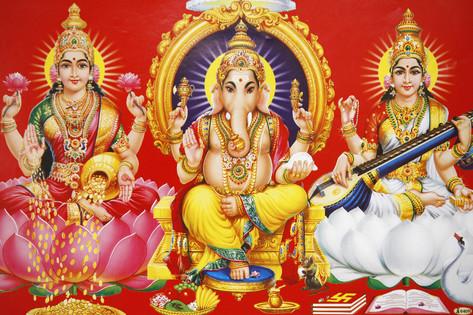
Credit: Pinterst. Ganesa with Lakshmi and Sarasvati
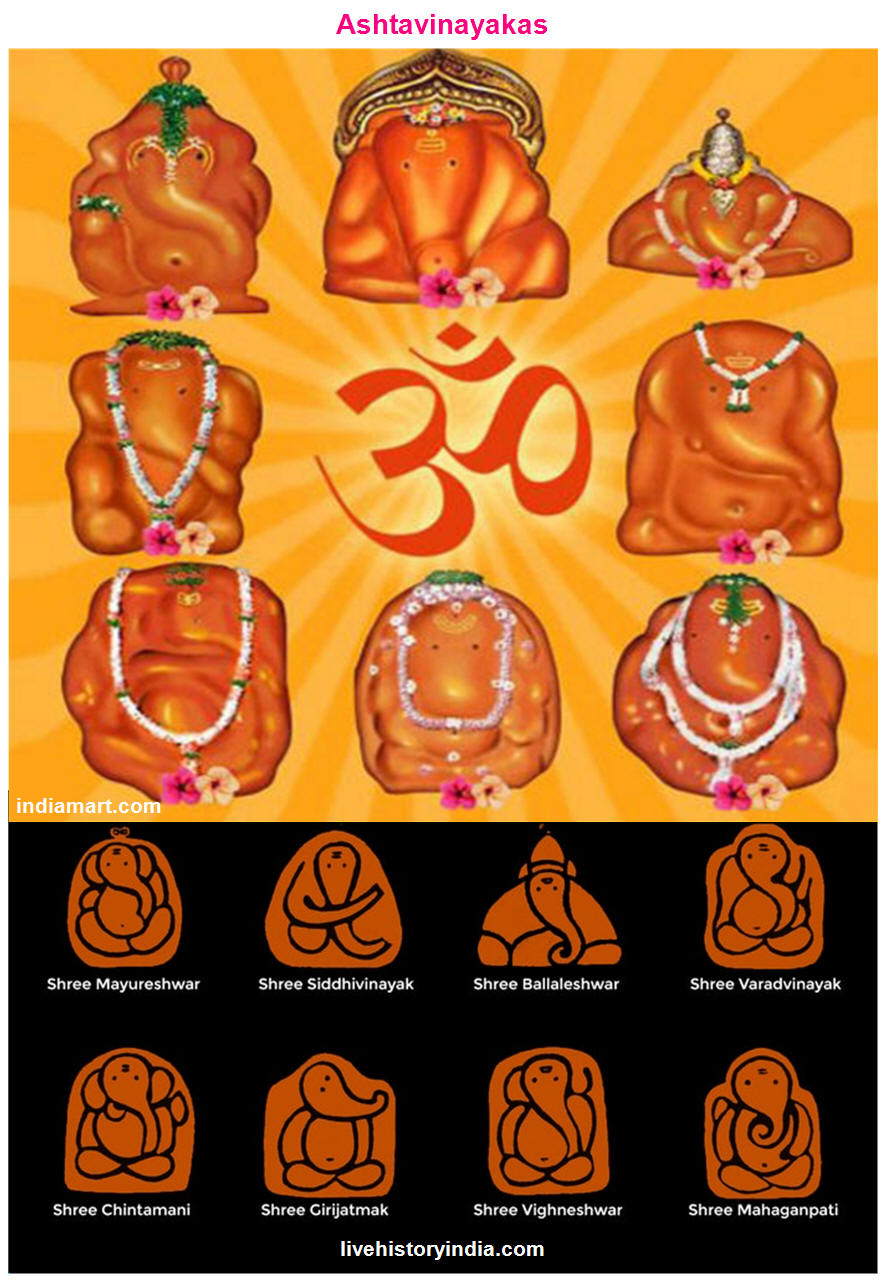
Sri Mayūreśvara Mandir is a Ganesa Temple in Moragāv or Morgaon in
Maharashtra. It is one of the eight temples dedicated to Vinayaka
(Ashtavinayaka). Ganesa is the Supreme Being, who killed demon Sindhu.
Around Pune, there are eight Ganesa Temples, of the which the Morgaon
Temple is the foremost. The pilgrim circuit begins and ends at Moragāv
in the Darshan of the Ashtavinayakas.
He is six-armed and sports a white complexion.
The demon Sindhu was born of Chakrapani and Ugrā who conceived having
uttered the solar Mantra. The fetus was so hot in her womb, she had a
premature delivery and abandoned the newborn in the ocean. Chakrapani
was very upset. Soon a son was born of the abandoned fetus and named
Sindhu meaning ocean by the grieving father. The sun-god gave the boy a
pot of Amrita with the stipulation it would offer immortality as long as
it was not broken. To protect the pot, he swallowed it
Parvati performed Tapas and meditate on Ganesa, who as Parabrahman
blessed her to become her son. He was to Parvati and Siva named him
Ganesa. His mount was, no,
it is not the rat but a peacock. Ganesa kicked an egg, from which
emerged his Vahana, the peacock, earning the eponymous name of
Mayūreśvara or Moreshvar.
Sindhu sustained by Nectar of Immortality harassed, humiliated and beat
up on the gods, who begged Gunesa to defeat Sindhu. Gunesa decimated
Sindhu's army and cut Sindhu's belly open and emptied the pot of
panacea. Sindhu was dead. Brahma was exhilarated and built a temple in
Moragaav or Morgaon for him and gave Siddhi and Buddha in marriage to
Gunesa. As soon as the mission was accomplished Gunesa returned heaven
and presented his peacock mount to his younger brother Skanda.
https://www.youtube.com/watch?v=PfDWazPPxqI
Darshan of Moreshwar.
https://www.youtube.com/watch?v=co2Qme1P3Po
The eight Ganesas
https://en.wikipedia.org/wiki/Ashtavinayaka
